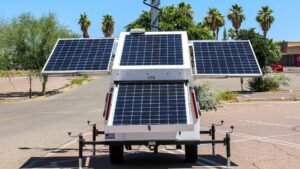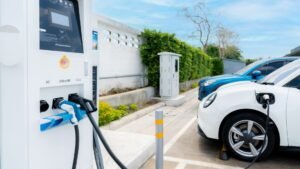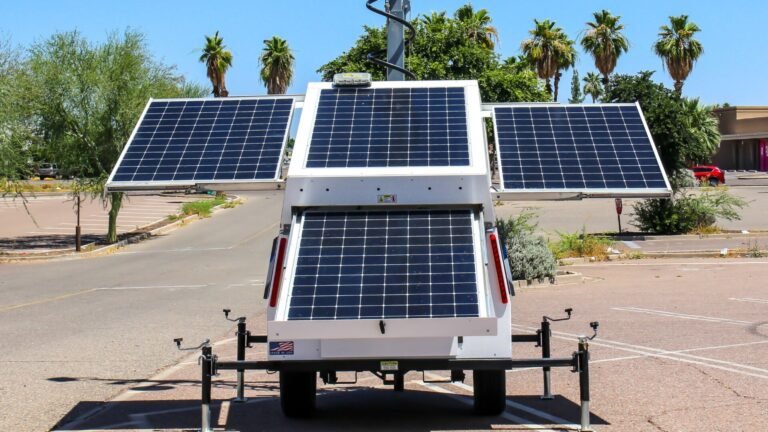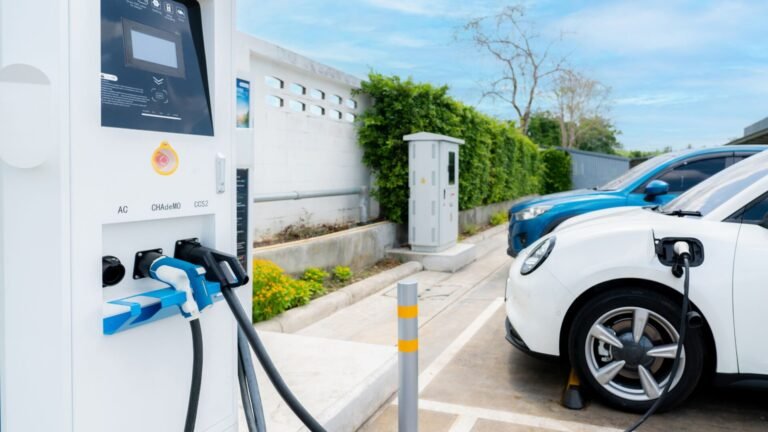Tropical islands, with their lush landscapes and sunny skies, are not only paradises for vacationers but also fertile grounds for renewable energy exploration.
Blessed with abundant sunlight and consistent wind patterns, these islands present an unparalleled opportunity to harness the power of nature for sustainable development.
In this blog post, we will delve into the concept of hybrid solar wind systems and explore their potential to revolutionize energy production on tropical islands, providing clean, reliable power to communities while preserving the natural beauty of these idyllic destinations.
Harnessing Solar and Wind Energy:
Tropical islands are characterized by their unique geographical features, which make them prime candidates for hybrid solar wind systems.
With abundant sunlight bathing the landscape and consistent trade winds sweeping across the shores, these islands offer an ideal environment for renewable energy generation.
Hybrid systems seamlessly integrate solar photovoltaic (PV) panels and wind turbines to capitalize on these natural resources, ensuring a continuous and reliable power supply throughout the day and year.
Solar panels work tirelessly under the tropical sun, converting its rays into electricity with remarkable efficiency. This reliable source of power is particularly advantageous during daylight hours when demand is typically higher.
Meanwhile, the wind turbines stand tall, harnessing the kinetic energy of the trade winds that grace tropical regions.
These turbines spin gracefully, transforming the breeze into electricity, especially during periods of intensified winds, ensuring a steady flow of energy even when the sun sets or clouds temporarily obscure its rays.
Advantages of Hybrid Systems
- Stable Power Generation: By combining solar and wind energy sources, hybrid systems can provide a more stable and consistent power supply compared to standalone solar or wind systems.
This stability is crucial for meeting the energy demands of tropical islands, which often face fluctuations in grid power and reliance on fossil fuels. - Maximized Energy Production: Hybrid systems optimize energy production by leveraging both solar and wind resources.
During daylight hours, solar panels produce electricity, complemented by wind turbines that continue generating power, especially during periods of low solar irradiance or at night. This ensures a continuous flow of energy to meet the island’s needs. - Reduced Dependency on Fossil Fuels: By transitioning to hybrid solar-wind systems, tropical islands can reduce their dependency on imported fossil fuels for electricity generation.
This not only enhances energy security but also mitigates the environmental impact associated with burning fossil fuels, such as air pollution and greenhouse gas emissions. - Community Empowerment: The adoption of hybrid solar-wind systems empowers local communities on tropical islands by creating opportunities for job creation, skill development, and community ownership of renewable energy projects.
Community involvement in the planning, implementation, and management of these projects fosters a sense of ownership and pride, strengthening social cohesion and promoting sustainable development at the grassroots level. - Cost Savings: Transitioning to hybrid solar-wind systems can lead to significant cost savings for tropical islands in the long run. While initial investment costs may be higher compared to traditional energy sources, the operational and maintenance costs of renewable energy systems are typically lower.
Additionally, as technology advances and economies of scale improve, the cost of renewable energy production continues to decrease, making it a financially attractive option for island communities. - Energy Independence: Hybrid systems offer tropical islands greater energy independence by diversifying their energy sources and reducing reliance on external suppliers of fossil fuels.
This increased autonomy enhances energy security, ensuring a more resilient energy infrastructure that is less susceptible to disruptions caused by external factors such as geopolitical tensions or natural disasters. - Grid Stability: Hybrid solar wind systems contribute to grid stability by providing a more balanced and reliable source of energy.
Solar and wind resources often complement each other, with solar panels generating electricity during the day and wind turbines producing power during periods of low solar irradiance or at night.
This diversity of energy sources helps to mitigate the variability inherent in renewable energy generation, ensuring a consistent and stable supply of electricity to the grid.
Additionally, advanced control systems and energy storage technologies can further enhance grid stability by managing fluctuations in supply and demand more effectively.
Case Studies:
Several tropical islands have already embraced hybrid solar-wind systems as a sustainable energy solution. One notable example is the island of Ta’u in American Samoa, which installed a microgrid with solar panels and battery storage, supplemented by a wind turbine.
This project has significantly reduced the island’s reliance on diesel generators, leading to cleaner and more reliable energy supply.
Challenges and Solutions:
While hybrid solar-wind systems offer numerous benefits, they also present challenges, particularly in terms of integration, storage, and variability of renewable resources.
However, advancements in technology, such as smart grid management, energy storage solutions like lithium-ion batteries, and predictive analytics, are addressing these challenges and improving the efficiency and reliability of hybrid systems.
Conclusion:
Hybrid solar wind systems represent a promising solution for powering tropical islands sustainably. By harnessing the abundant solar and wind resources available in these regions, these systems can provide stable, reliable, and environmentally friendly electricity to meet the energy needs of island communities.
With ongoing advancements in technology and increasing awareness of the benefits of renewable energy, hybrid systems are poised to play a significant role in the transition towards a more sustainable energy future for tropical islands.





